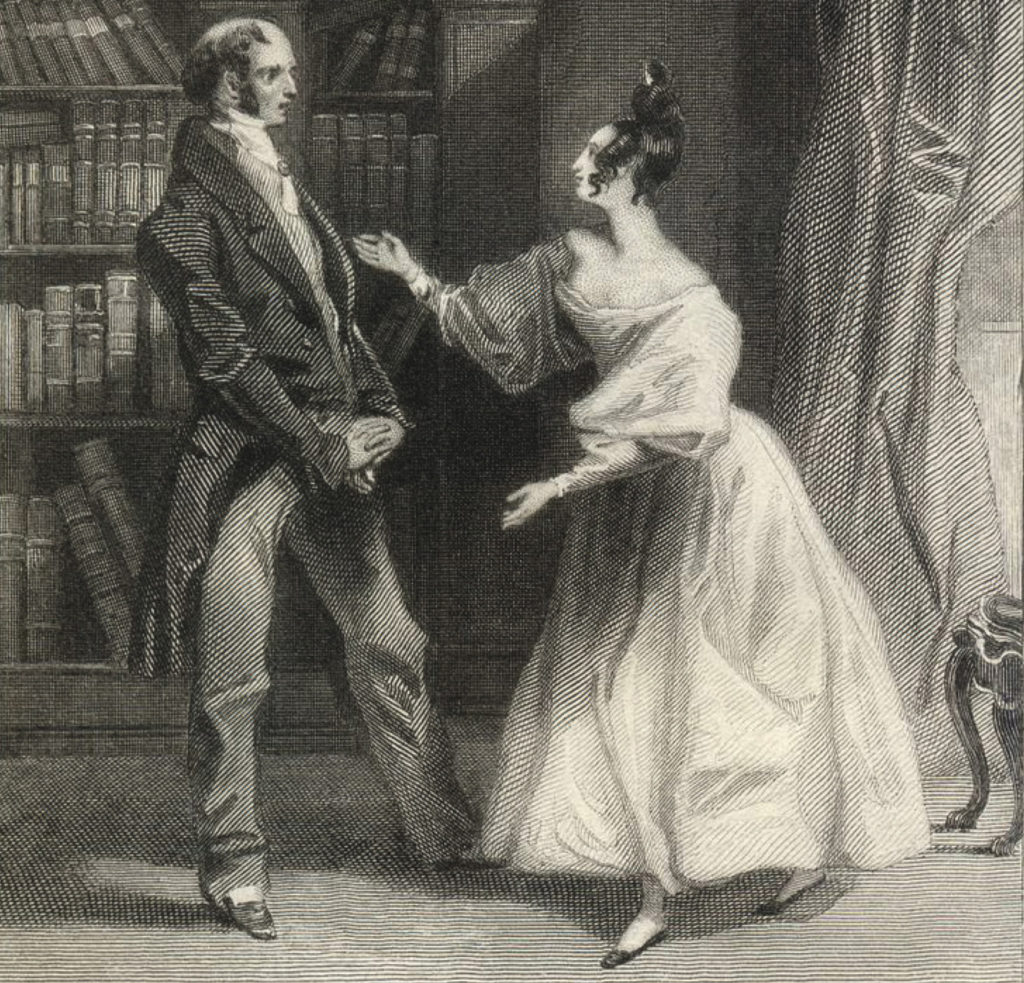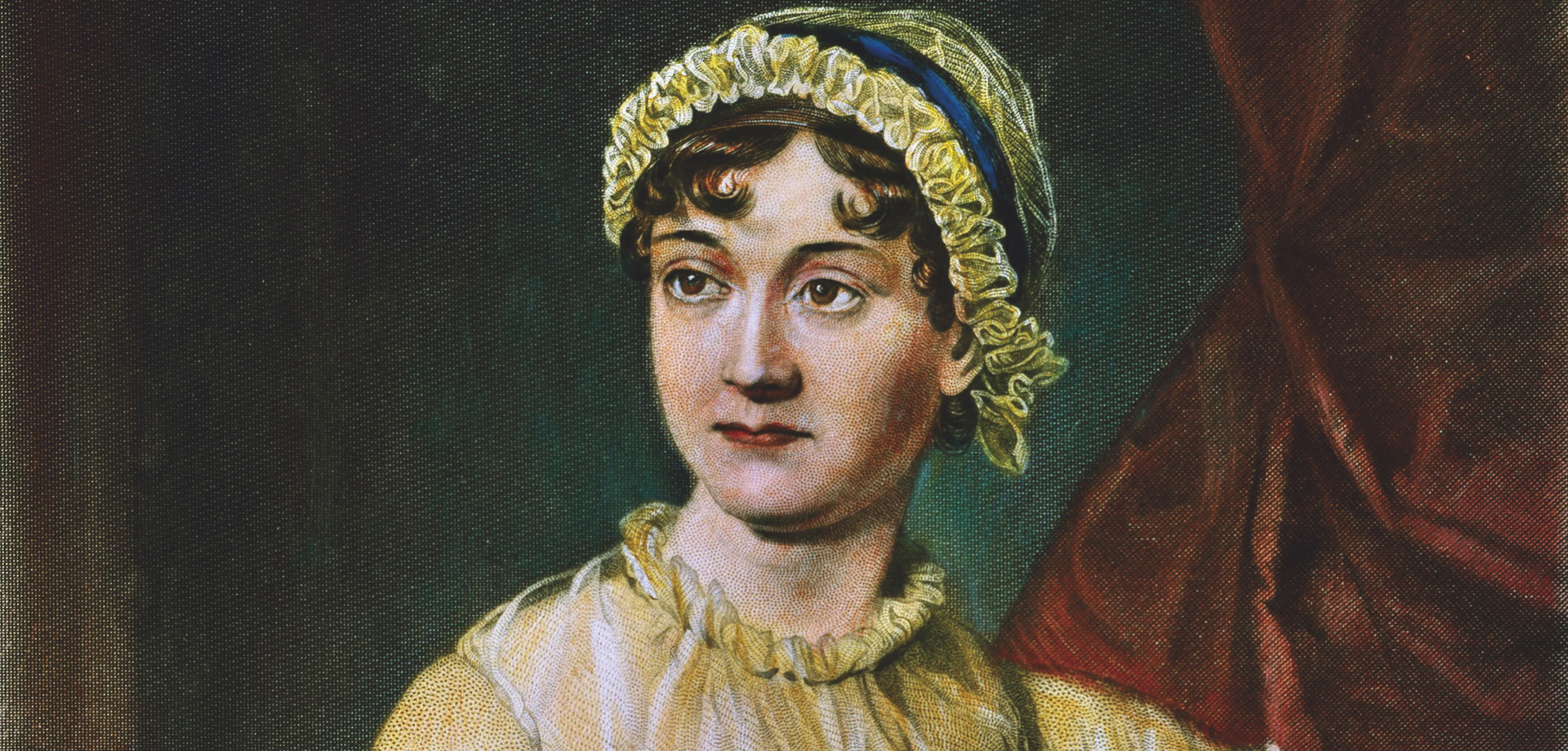Adapt and adaptability
Jane Austen died 200 years ago but she can be found on pavements, currency and benches and is still read widely
Jane Austen seems to be everywhere you look this summer – and not just because she’s newly on currency. With the 200th anniversary of her death on 18 July, celebrating Austen’s life and works is at a fever pitch. Austen quotes now appear on the sidewalks of Winchester when it rains, in a project dubbed Rain Jane. Sitting With Jane involves 24 artist-designed, Jane Austen-themed benches, displayed in public spaces in Basingstoke until next month. Austen has quite literally taken to the streets in 2017.
What makes Austen’s six novels, which include Pride and Prejudice (1813) Sense and Sensibility (1811) and Emma (1816), so enduring? The easy way out is to claim them as great literature, drop the microphone and walk away. But there’s plenty of great literature that hasn’t ended up on the tenner, wet sidewalks or benches.
We have far less of an idea of who the real Austen was than we do for many other famous authors
Austen’s longevity arises from being one of the few classic authors whose works speak with equal energy to influential intellectuals and avid readers. She’s both critically acclaimed and popularly revered. Scholars praise her technique, artistry and themes, and everyday readers hunger for her characters and stories to live on in sequels and continuations. Should we be worried that Austen’s fiction is being mixed with trendy things like zombies, vampires or porn? Is that likely to lower her cachet among gatekeepers of high culture?
We wouldn’t come to that conclusion if we took the long view. Austen has adapted or, rather, many of us have adapted her, for nearly two centuries, in everything from book illustration to dramatisation to early TV, radio, and film, and all manner of games, costumes, advertisements and cartoons. Readers have refocused their readings of her fiction, remaking her in new ways – for fun and profit – for generations.
Sometimes she’s presented to us as an early author of romance fiction or of chick lit. It’s a partial view, but you could satisfyingly read Austen’s novels for their love stories and happy endings alone. These features are inarguably there. Her heroes and heroines are unforgettable to many who encounter them on the page and screen, in memes and vlogs.
You could also read Austen’s fiction for the humour, ignoring the love stories for an exposé of the foibles and foolishness of everyday people in their families and communities. These books are exceptionally funny. You could read them to laugh. But they are also serious, rife with trenchant social criticism. Austen’s fiction shows a wry sense of the world’s unfairness and absurdities, yet she rarely tells readers exactly what to think.

Which is the real Austen, then? Is she the originator of escapist chick lit, or one of our deepest, greatest novelists, or some of both? Does she embrace tradition and the established order, expose the world’s inadequacies and injustices to advocate for change, or – as impossible as it may seem – some of both? Anyone who tells you they know with certainty who Austen was or what she was up to is probably describing what about her best suits them.
Austen rarely came out and said what she thought about the major issues and debates of her time. In her fiction, she alludes. She jokes. She skirts around things with sly references. We have far less of an idea of who the real Austen was than we do for many other famous authors. With just 161 surviving letters, most of them chatty rather than soul-baring, there isn’t a lot of evidence. Austen left no journals and few manifestos. In the absence of hard evidence, many readers have infused the not-quite-blank slate of Austen with their own dearest notions and desires.
That would explain why so many of us think we know her, as Austen seems to become almost a personal friend to so many readers. So too would the fact that her fiction can be read with pleasure, and with different pleasures, at every age, from one’s teens to old age. It’s what’s led to habits like that attributed to philosopher Gilbert Ryle, who, when asked if he still read novels, is said to have answered “Yes, all six every year”, meaning only Austen’s.
Another reason that we think we know her, and that so many of us return to her as ours 200 years on, has to do with her adaptability. Her characters and plots are re-purposable and continuable in ways that are unusual. From Clueless to Bridget Jones’s Diary, Longbourn to Eligible, Austen’s stories are updated for page, stage and screen in ever-evolving ways.
Holding the attention of both scholarly and popular audiences alike is what Austen has done over two centuries of images, stages, screens, schools and soapboxes. Austen’s first English illustrator, the eccentric Ferdinand Pickering, presented her fiction to audiences as gothic-inspired suspense-filled stories of female and family conflict in the 1830s. His images had great staying power, dominating the visual field until the 1880s.
Stage plays, too, had a central role in furthering Austen’s image more than a century ago, letting actors give voice to and audiences feel a kinship with the author and her characters. Austen’s little-known first dramatist, Rosina Filippi, was a colourful, daring director-actor, whose efforts in the 1890s led thousands of young women to ventriloquise Elizabeth Bennet’s lines of dialogue in front of drawing-room audiences and in school performances. These late-19th century amateur actors repeated Elizabeth’s most audacious, admirable, assertive and rebellious lines, in formative years in which their own courtship stories were not yet written.
Austen wasn’t just about straight romance. Three decades later, the first actors to play sisters Jane and Cassandra Austen on the professional stage in 1932 turn out to have been a real-life romantic couple. Director-visionary Eva Le Gallienne played Cassandra and stunning starlet Josephine Hutchison played Jane, as their then whispered-about queerness prompted snarky comments from the play’s reviewers. That play, Eleanor Holmes Hinkley’s Dear Jane, showed that a life without marriage, a life devoted to writing, was an Austen-inspired noble and admirable choice, long before TV and film biopics such as Miss Austen Regrets (2008) or Becoming Jane (2007).
Few Janeties, and only a handful of scholars, have focused on the long history of and centrality of popular culture in building Austen’s image. It all started long before Colin Firth’s BBC Pride and Prejudice wet white shirt in 1995. In no small sense, that history made Firth’s famous moment possible. Our relative neglect of her popular history now seems strange. But likely it arose because we’ve been too quick to write much of it off as lightweight, unfortunate or greedy, rather than searching for powerful patterns that created the conditions for new meanings.
Critical acclaim has served Austen very well, of course. It’s kept her in schools, textbooks and anthologies. But popular acclaim and new media also propelled her good reputation forward, keeping her in front of equally large numbers of readers and fans. As long as popular culture makers take Austen with them into the next hot new medium, then she surely has a bright, interesting future. In that future, we’ll no doubt continue to argue about who was the “real” Austen then, but we will probably continue to demonstrate what keeps her real to us now.
Devoney Looser is professor of English at Arizona State University. Her new book The Making of Jane Austen is published by John Hopkins University Press

Leave a reply
Your email address will not be published.